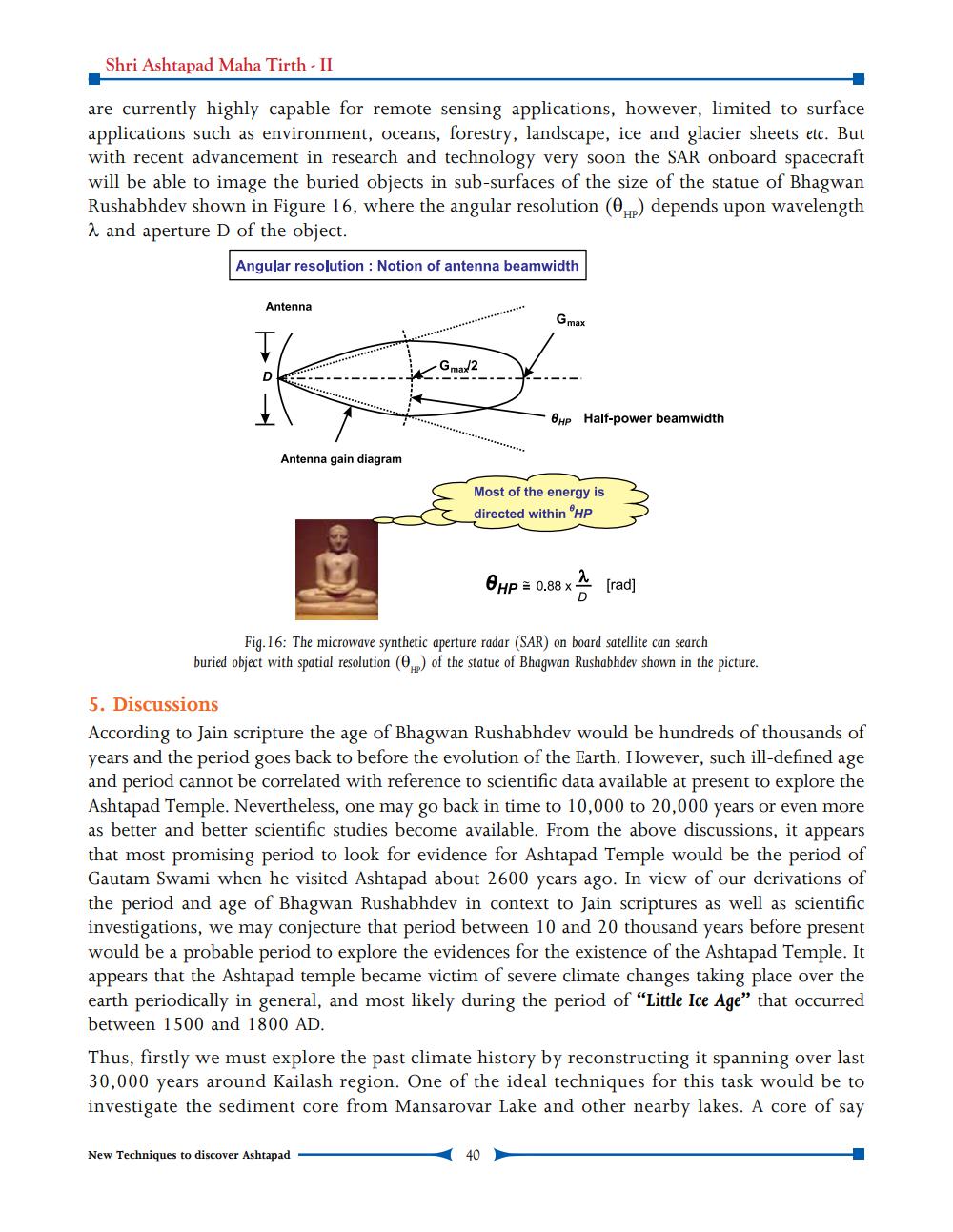________________
Shri Ashtapad Maha Tirth - II
are currently highly capable for remote sensing applications, however, limited to surface applications such as environment, oceans, forestry, landscape, ice and glacier sheets etc. But with recent advancement in research and technology very soon the SAR onboard spacecraft will be able to image the buried objects in sub-surfaces of the size of the statue of Bhagwan Rushabhdev shown in Figure 16, where the angular resolution (0) depends upon wavelength 9 and aperture D of the object.
Angular resolution : Notion of antenna beamwidth
Antenna
Gmax
Gmax2
DO
- HP Half-power beamwidth
Antenna gain diagram
Most of the energy is directed within ®HP
cupie 3
HP = 0.88 x
[rad]
Fig. 16: The microwave synthetic aperture radar (SAR) on board satellite can search buried object with spatial resolution (p) of the statue of Bhagwan Rushabhdev shown in the picture.
5. Discussions According to Jain scripture the age of Bhagwan Rushabhdev would be hundreds of thousands of years and the period goes back to before the evolution of the Earth. However, such ill-defined age and period cannot be correlated with reference to scientific data available at present to explore the Ashtapad Temple. Nevertheless, one may go back in time to 10,000 to 20,000 years or even more as better and better scientific studies become available. From the above discussions, it appears that most promising period to look for evidence for Ashtapad Temple would be the period of Gautam Swami when he visited Ashtapad about 2600 years ago. In view of our derivations of the period and age of Bhagwan Rushabhdev in context to Jain scriptures as well as scientific investigations, we may conjecture that period between 10 and 20 thousand years before present would be a probable period to explore the evidences for the existence of the Ashtapad Temple. It appears that the Ashtapad temple became victim of severe climate changes taking place over the earth periodically in general, and most likely during the period of “Little Ice Age” that occurred between 1500 and 1800 AD. Thus, firstly we must explore the past climate history by reconstructing it spanning over last 30,000 years around Kailash region. One of the ideal techniques for this task would be to investigate the sediment core from Mansarovar Lake and other nearby lakes. A core of say
New Techniques to discover Ashtapad
40




